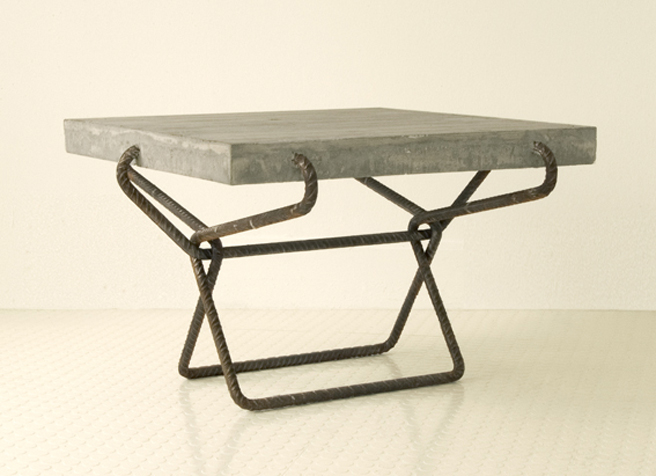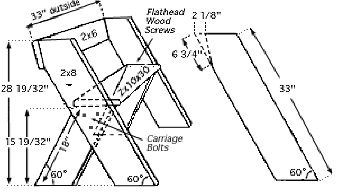Schwarz
View current page
...more recent posts
aldo leopold bench
To spy a Leopold bench in someone's yard is to know something about the family who there resides. Even if you haven't read Leopold's opening lines, "There are some who can live without wild things, and some who cannot. These essays are the delights and dilemmas of one who cannot," from A Sand County Almanac, you will appreciate this easy-to-build bench. If left untreated, this stable bench develops a characteristic gray patina, however, putting some preservative where bench meets ground will prolong its life. Its form, resting alone under a tree or in congregation around a firepit, reminds us of Leopold's thoughtfulness:
"When some remote ancestor of ours invented the shovel, he became a giver: He could plant a tree. And when the axe was invented, he became a taker: He could chop it down. Whoever owns land has thus assumed, whether he knows it or not, the divine functions of creating and destroying plants."
"The last word in ignorance is the man who says of an animal or plant, 'What good is it?' If the land mechanism as a whole is good, then every part is good, whether we understand it or not. If the biota, in the course of aeons, has built something we like but do not understand, then who but a fool would discard seemingly useless parts? To keep every cog and wheel is the first precaution of intelligent tinkering."
Materials: One 2x6x33", one 2x10x30", one 2x8x10', six 3/8"x 31/2" carriage bolts with washer and nut, twelve 3/8" x 31/2" #12 or #14 flathead wood screws. Use Douglas Fir for your Leopold bench, if you can, and customize its size to suit you. The materials listed will make a 33" bench, but you may choose to build out to 48".
a simple build
from the worlds going to hell in a bucket desk:
ferrari world abu dhabi
via things
bartok
justin found this one
One of the many revelations here is the quasi-religious mysticism that infused parts of the Bauhaus in its earliest years. The first image you see when you step into the galleries is an Expressionist painting from 1919 by Johannes Itten, who ran the schoolís introductory course. Its colorful abstract forms, which break down into a dense pattern of overlapping triangles, circles and rectangles, evoke the refracted glass of a stained-glass cathedral window.
Just below it is a design for a coffin lid drawn in 1920 by Lothar Schreyer, a director of the Bauhaus theater, for his wife (which, in a nice Freudian twist, was used for his motherís burial instead). A womanís figure, composed of interlocking circles and laid over a vibrant background of gray and blue, is framed by the lidís trapezoidal outline. Farther along you come up against Marcel Breuerís 1921 ďAfricanĒ chair, whose crudely chiseled wood frame looks so out of place with conventional images of the Bauhaus that you may wonder if youíve walked into the wrong show.
These works reveal an ambivalence about the machine age and what was being left behind. Even as Walter Gropius, the schoolís founding director, was promoting a mass-production aesthetic, Itten and others were advocating a more atavistic approach, one that was rooted in the skills of the medieval craftsman. (Itten even began his classes on abstract art with a series of yoga exercises that were meant to reawaken the physical senses and bring the students in closer contact with their work.)

